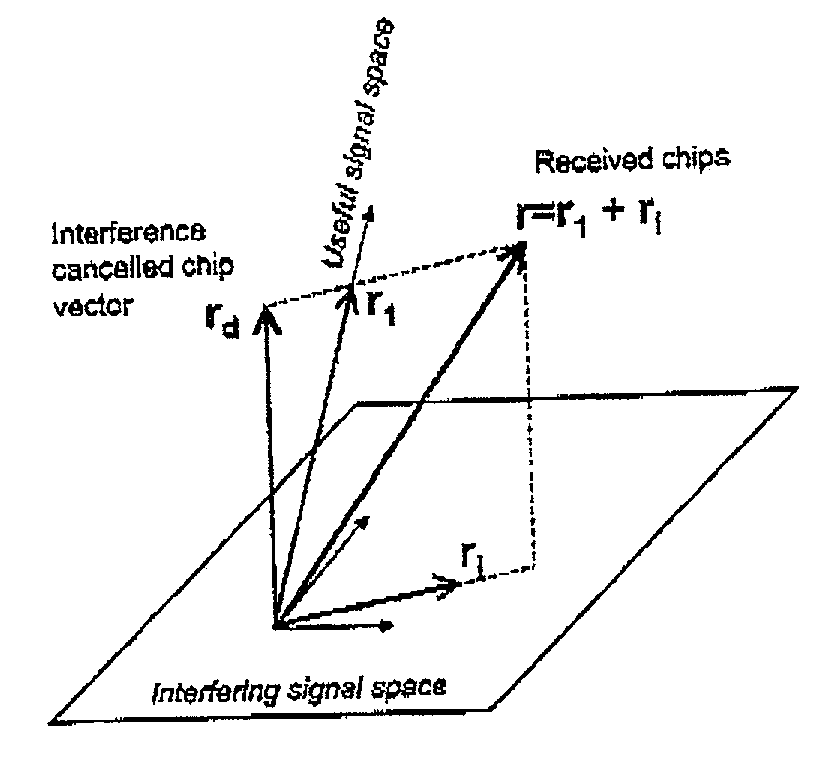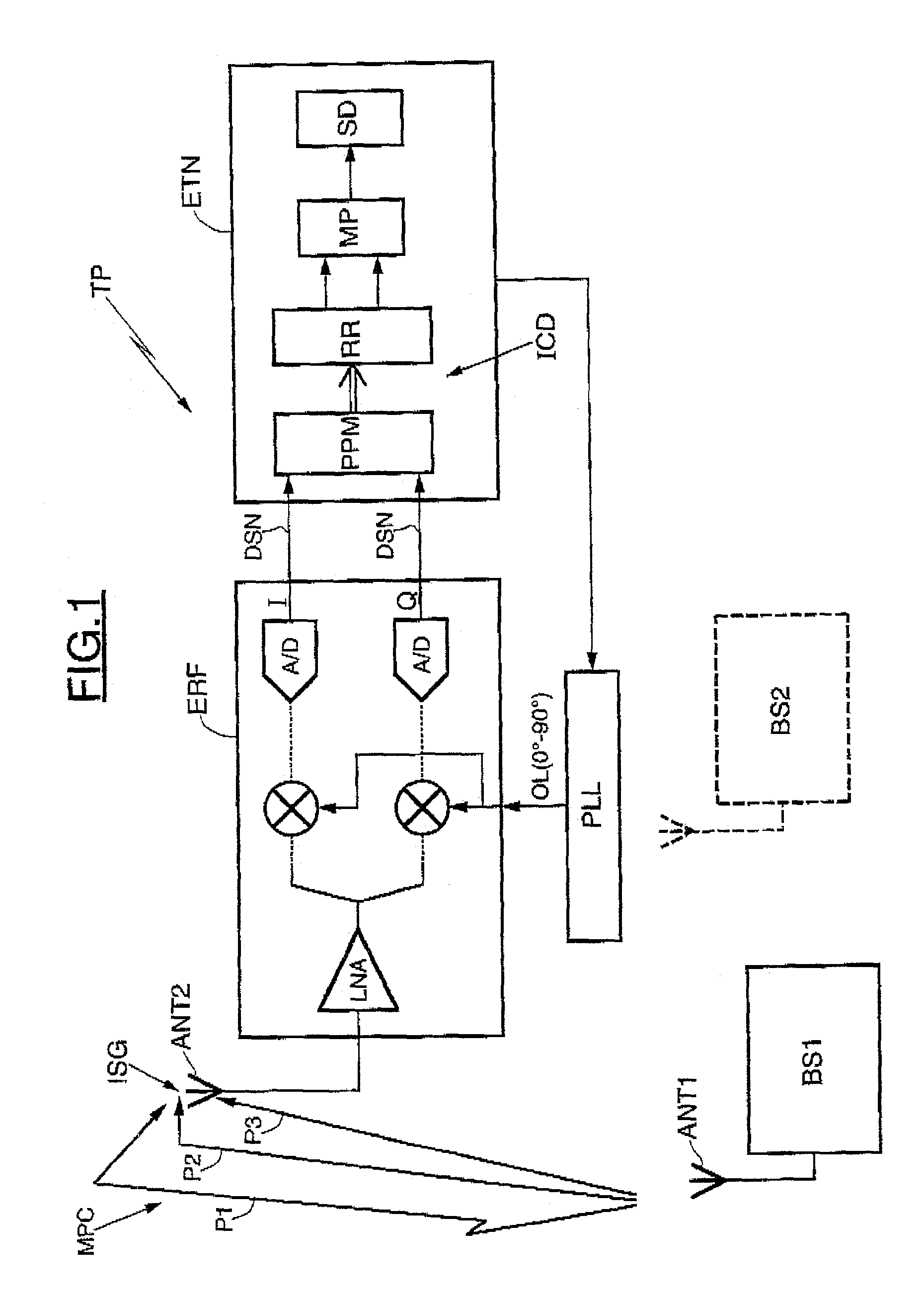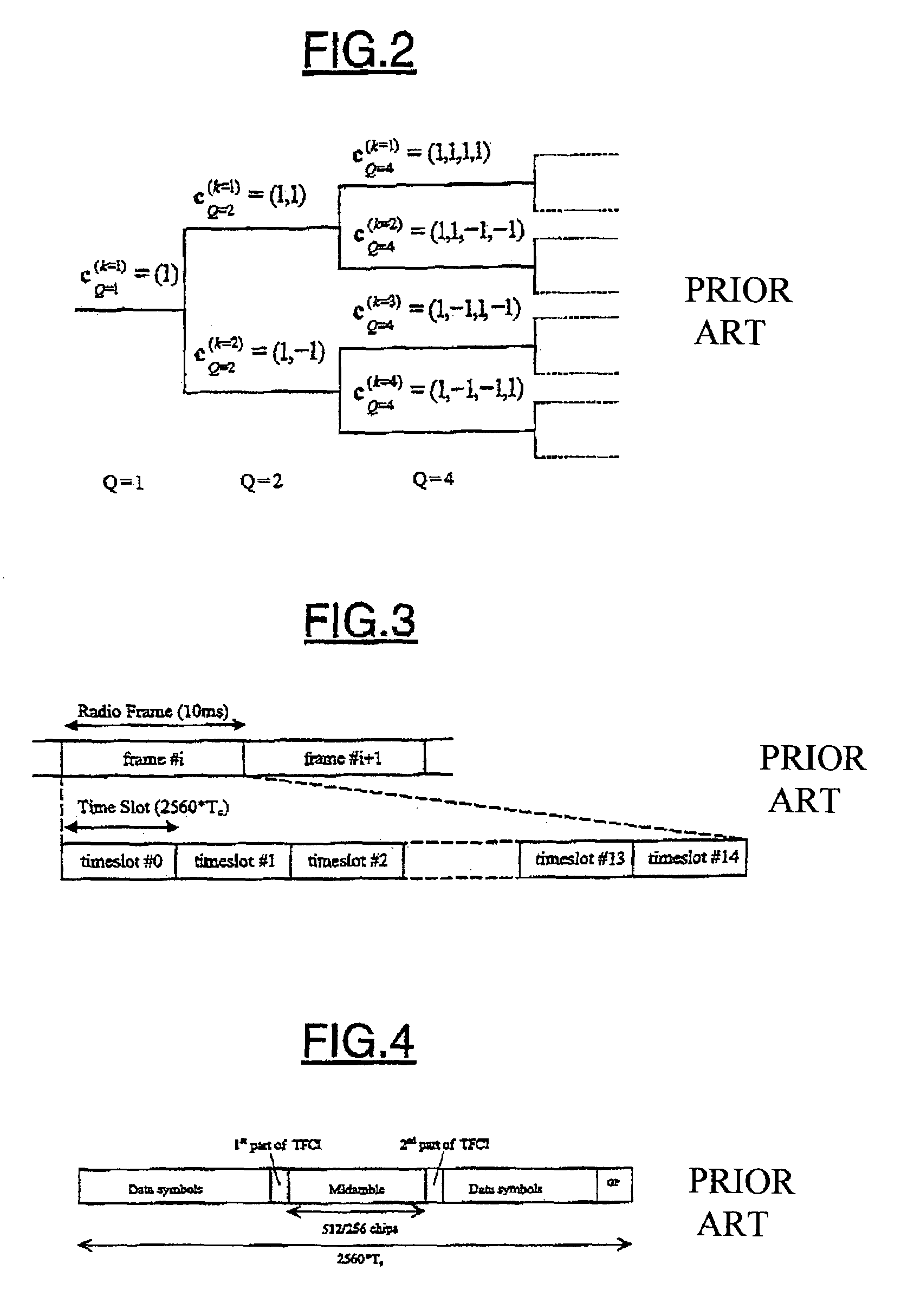Method and device for interference cancellation in a CDMA wireless communication system
a wireless communication system and interference cancellation technology, applied in the field of wireless communication systems, can solve the problems of severe degradation, inter-cell interference (ici) coming from other cells, multiple access interference (mai) from users in the cell,
- Summary
- Abstract
- Description
- Claims
- Application Information
AI Technical Summary
Benefits of technology
Problems solved by technology
Method used
Image
Examples
Embodiment Construction
[0073]In FIG. 1, the reference TP denotes a remote terminal such as a cellular mobile phone which is in communication with a base station BS1. In this embodiment, the wireless communication system is an UTRA-TDD system, and only the downlink situation will be described.
[0074]The mobile phone TP comprises, conventionally, an analog radio frequency front end stage ERF connected to an antenna ANT2 for receiving an input signal ISG.
[0075]Conventionally, the stage ERF comprises a low noise amplifier LNA and two processing channels including mixers and conventional filters and amplifiers (not shown). The two mixers receive respectively from a phase locked loop PLL two signals, having mutually a phase difference of 90°. After frequency transposition in the mixers, the two processing channels define respectively two streams I and Q as it is well known by the man skilled in the art. After digital conversion into analog-to-digital converters A / D, the two digital streams I and Q are delivered ...
PUM
 Login to View More
Login to View More Abstract
Description
Claims
Application Information
 Login to View More
Login to View More - R&D
- Intellectual Property
- Life Sciences
- Materials
- Tech Scout
- Unparalleled Data Quality
- Higher Quality Content
- 60% Fewer Hallucinations
Browse by: Latest US Patents, China's latest patents, Technical Efficacy Thesaurus, Application Domain, Technology Topic, Popular Technical Reports.
© 2025 PatSnap. All rights reserved.Legal|Privacy policy|Modern Slavery Act Transparency Statement|Sitemap|About US| Contact US: help@patsnap.com



